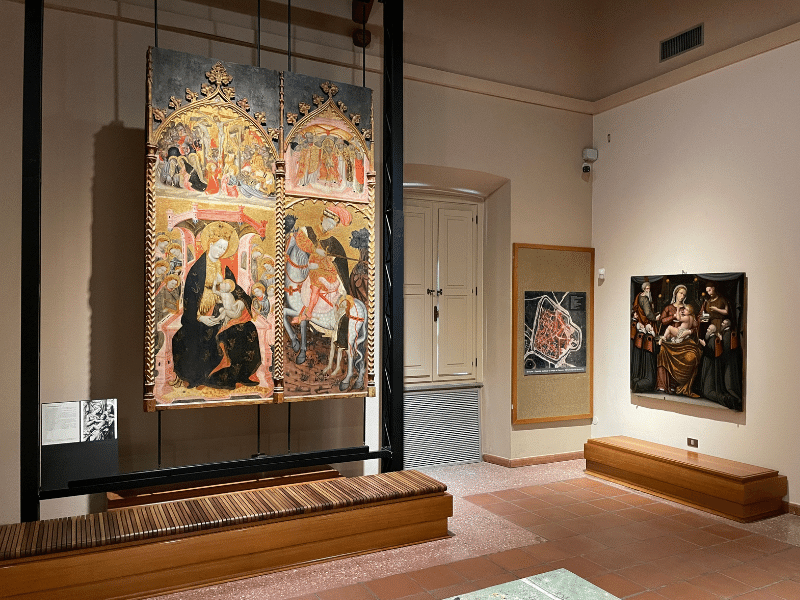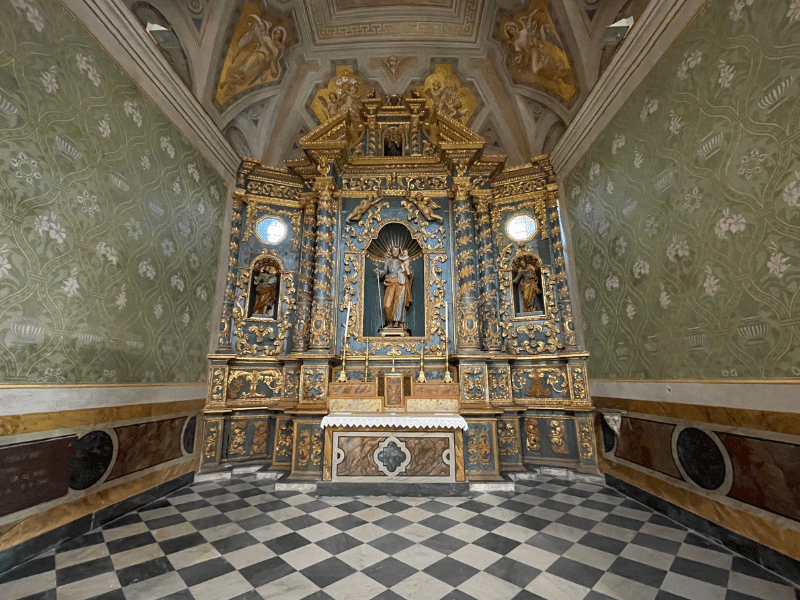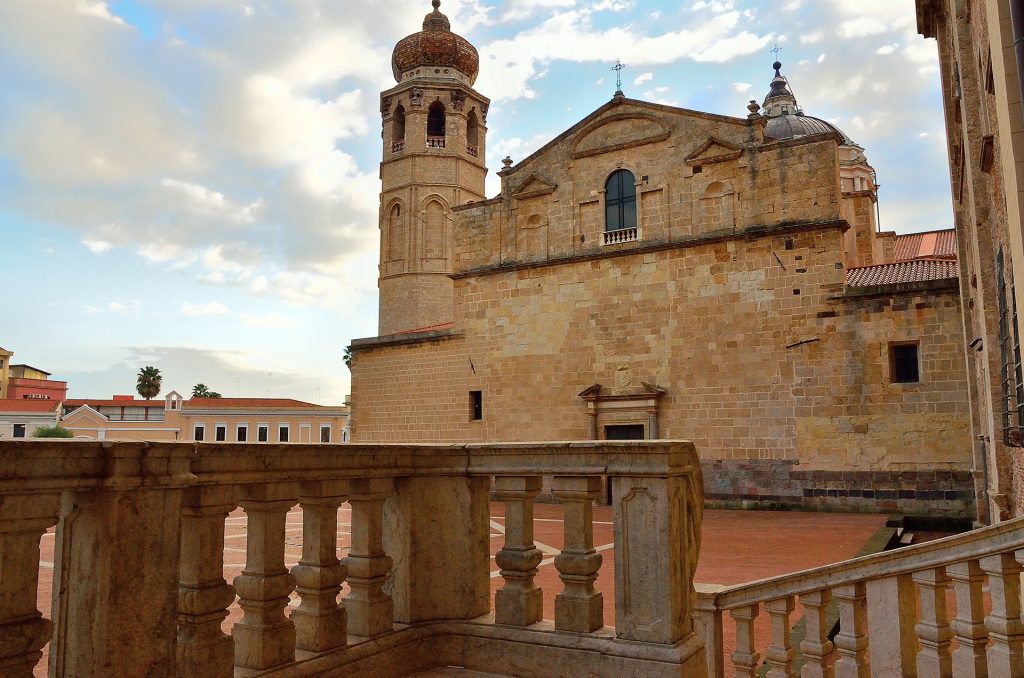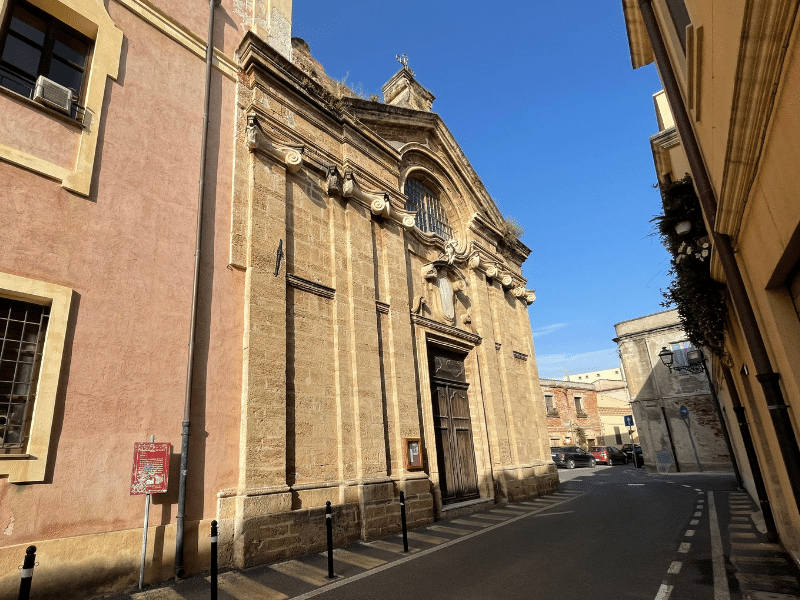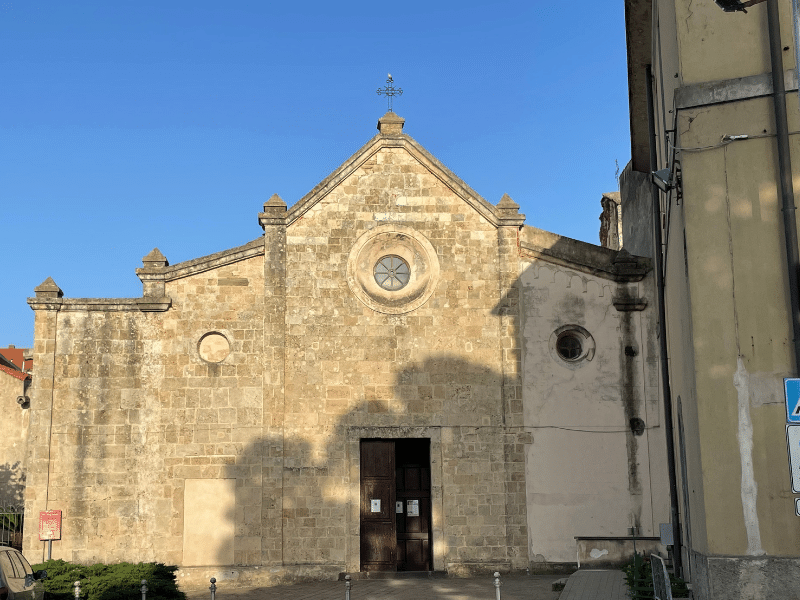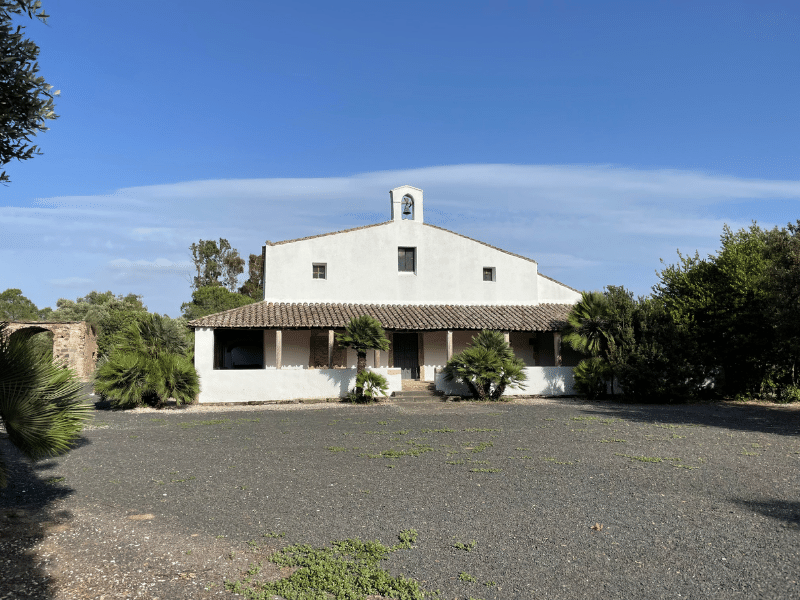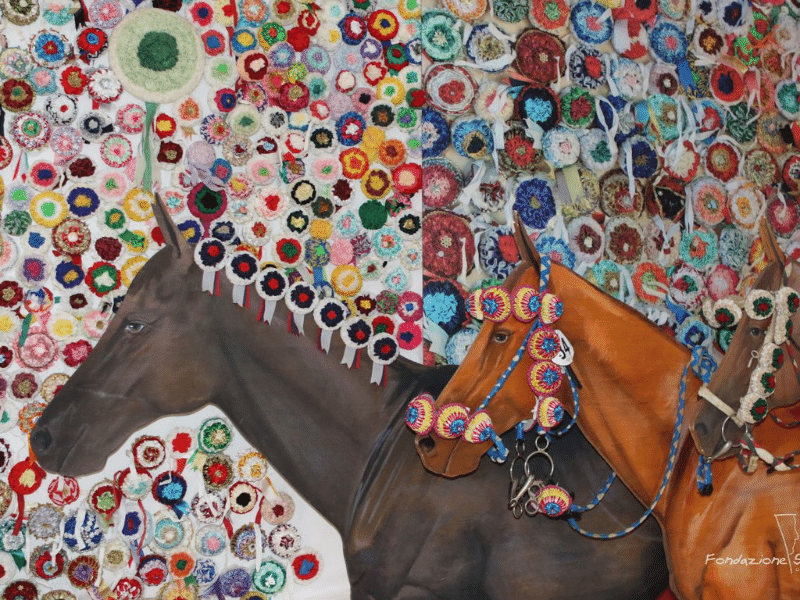Visiting the city of the Sartiglia means experiencing a journey, in which by strolling your way through the history of the Gremi and of many religious brotherhoods, you will really get to know the city and all of Spanish Sardinia.
Starting from the Antiquarium Arborense Archaeological Museum, with its two splendid altarpieces of the Madonna dei Consiglieri and San Martino, the themes concerning the Royal City of Oristano and professional associations, which are peculiar of the Spanish period, can be better understood.
The route then continues with a visit to the 17th century Chapel of the Gremio dei Falegnami di San Giuseppe, within the Cathedral, continuing with a visit to the Church of the Madonna del Carmine, dating back to the 18th century, an illustrious example of Baroque architecture in Sardinia, where the Gremio dei Sarti and the Confraternita delle Anime had their chapel; then, after passing through the streets which now host the equestrian joust, you will reach the Church of San Martino, built in the 13th century, and today chapel of the only two Archconfraternities in the city. The journey ends with the rural church of San Giovanni Battista , built in between the 14th and the 16th centuries and known as Santu Giuann’e Froris, located outside the city walls, a few steps from the inhabited center. This church used to host chapel of the gremio dei Contadini, as per invocation of the Saint.

